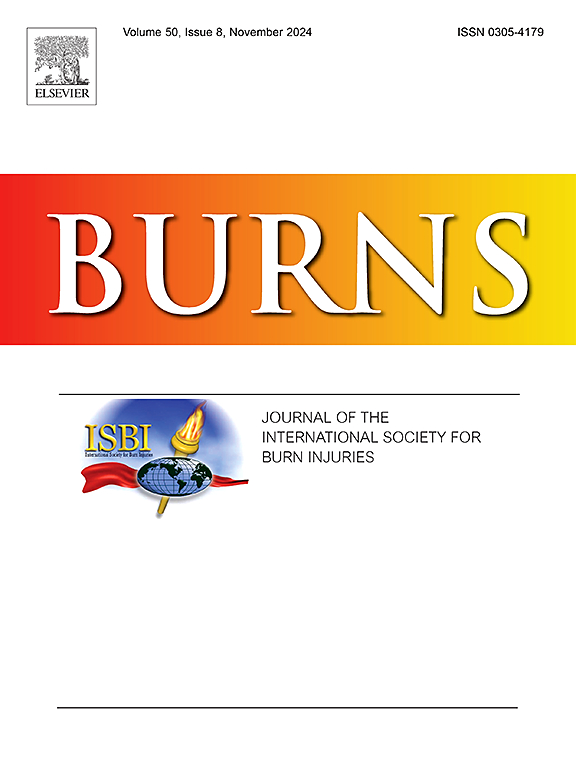A systematic review of advances in the use of spectral imaging in burn depth assessment
IF 3.2
3区 医学
Q2 CRITICAL CARE MEDICINE
引用次数: 0
Abstract
Background
Accurate burn depth assessment is critical for determining appropriate treatment and optimizing patient outcomes. Conventional methods, such as clinical assessment and laser Doppler imaging, have limitations in terms of accuracy and timeliness. Spectral imaging, including multispectral imaging and hyperspectral imaging, has emerged as a promising non-invasive modality to improve burn depth evaluation. This systematic review aims to evaluate the advances in spectral imaging technologies for burn depth assessment, with a focus on diagnostic accuracy, the role of machine learning integration, and the quality of current evidence.
Methods
A comprehensive literature search was conducted in March 2024 using PubMed, Scottish Network, EMBASE, and Cochrane Library databases. Studies that evaluated spectral imaging for burn depth assessment and compared it to standard methods such as laser Doppler imaging, clinical assessment, or histological analysis were included. The quality of the included studies was assessed using the QUADAS tool.
Results
Seven studies from 1988 to 2023 met the inclusion criteria, evaluating a total of 167 patients with 269 burn sites. The pooled analysis revealed a combined sensitivity of 86 % (95 % CI [0.80; 0.90]) and specificity of 84 % (95 % CI [0.70; 0.93]. However, there was a large range of sensitivity identified from 61 % to 97.2 % and specificity from 45 % to 100 %. Notably, the integration of machine learning, particularly convolutional neural networks and support vector machines, improved classification accuracy, with some models achieving over 95 % sensitivity and specificity. Despite these promising results, significant variability in methodologies and a lack of standardized ground truthing were identified.
Conclusion
Spectral imaging, especially when combined with machine learning, shows strong potential as an effective tool for burn depth assessment, offering high diagnostic accuracy and reproducibility. Further research is needed to standardize protocols and validate these technologies across diverse patient populations, paving the way for clinical adoption and improved patient care.
求助全文
约1分钟内获得全文
求助全文
来源期刊

Burns
医学-皮肤病学
CiteScore
4.50
自引率
18.50%
发文量
304
审稿时长
72 days
期刊介绍:
Burns aims to foster the exchange of information among all engaged in preventing and treating the effects of burns. The journal focuses on clinical, scientific and social aspects of these injuries and covers the prevention of the injury, the epidemiology of such injuries and all aspects of treatment including development of new techniques and technologies and verification of existing ones. Regular features include clinical and scientific papers, state of the art reviews and descriptions of burn-care in practice.
Topics covered by Burns include: the effects of smoke on man and animals, their tissues and cells; the responses to and treatment of patients and animals with chemical injuries to the skin; the biological and clinical effects of cold injuries; surgical techniques which are, or may be relevant to the treatment of burned patients during the acute or reconstructive phase following injury; well controlled laboratory studies of the effectiveness of anti-microbial agents on infection and new materials on scarring and healing; inflammatory responses to injury, effectiveness of related agents and other compounds used to modify the physiological and cellular responses to the injury; experimental studies of burns and the outcome of burn wound healing; regenerative medicine concerning the skin.
 求助内容:
求助内容: 应助结果提醒方式:
应助结果提醒方式:


